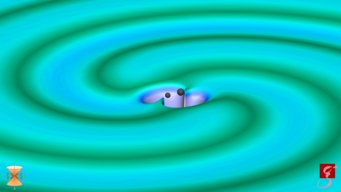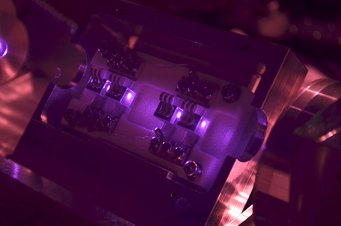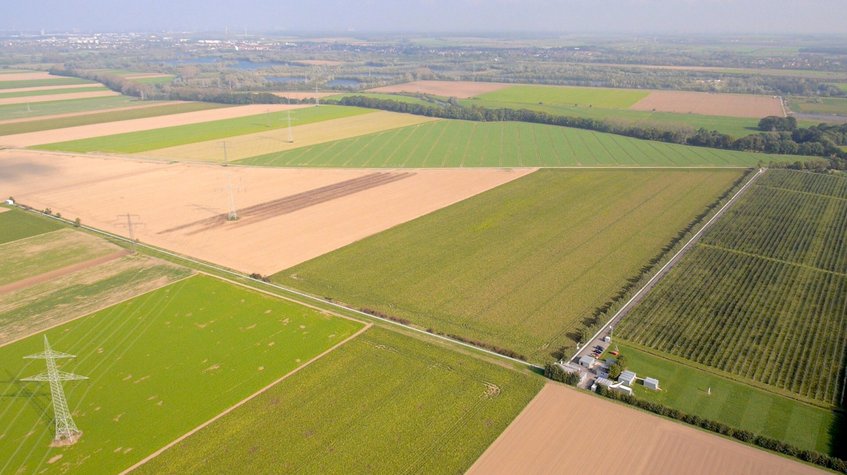GEO600 Very High Frequency
Upgrading the detector to explore a new part of the gravitational-wave spectrum
The German-British gravitational-wave detector GEO600 near Hannover, Germany, has tested and developed many of the technologies that are now used in current ground-based large gravitational-wave detectors. Now, GEO600 researchers will take their detector to the next level. Their goal is to search for gravitational waves at frequencies much higher than those observed by current instruments and to deepen our understanding of dark matter and the early Universe.
Gravitational waves and frequencies
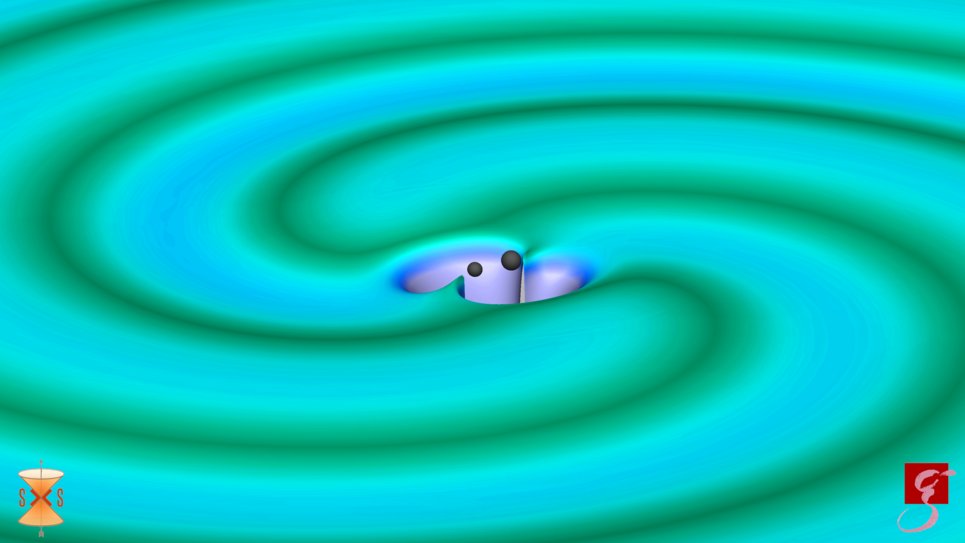
Gravitational waves are ripples in space-time that travel at the speed of light. They are generally caused by the accelerated motion of masses, such as pairs of black holes orbiting each other. The rhythm of this motion determines the rhythm, or frequency, of the gravitational waves sent out into space: The faster the orbital motion, the higher the frequency of the gravitational waves.
Current instruments such as LIGO, Virgo, and KAGRA observe gravitational waves in a frequency window from 10 hertz to 6000 hertz, where hertz measures oscillations per second. In this window, mergers of black holes and / or neutron stars are routinely observed. Signals from rotating isolated neutron stars and stellar explosions are also expected.
Physicists expect our Universe to be home to various objects that could emit gravitational waves at much higher frequencies, well above a few thousand hertz. Searching for them and finding them – and even not finding them – will deepen our understanding of the Universe.
Why upgrade GEOO600?
By upgrading GEO600 for superior sensitivity to gravitational waves at very high frequencies (hundreds of thousands of hertz to a million hertz), much higher than those observed by current instruments, a new part of the gravitational-wave spectrum will become accessible.
Until now, there have been no instruments sensitive to these high-frequency waves. This is a step into uncharted territory and a realm of new gravitational-wave sources. By searching for high-frequency gravitational waves, GEO600 scientists aim to look for signals that no one has been able to look for before.
This upgrade will keep the GEO600 at the cutting edge of science and will once again make it a pioneer in the search for gravitational waves.
Which upgrades will be done at GEO600?
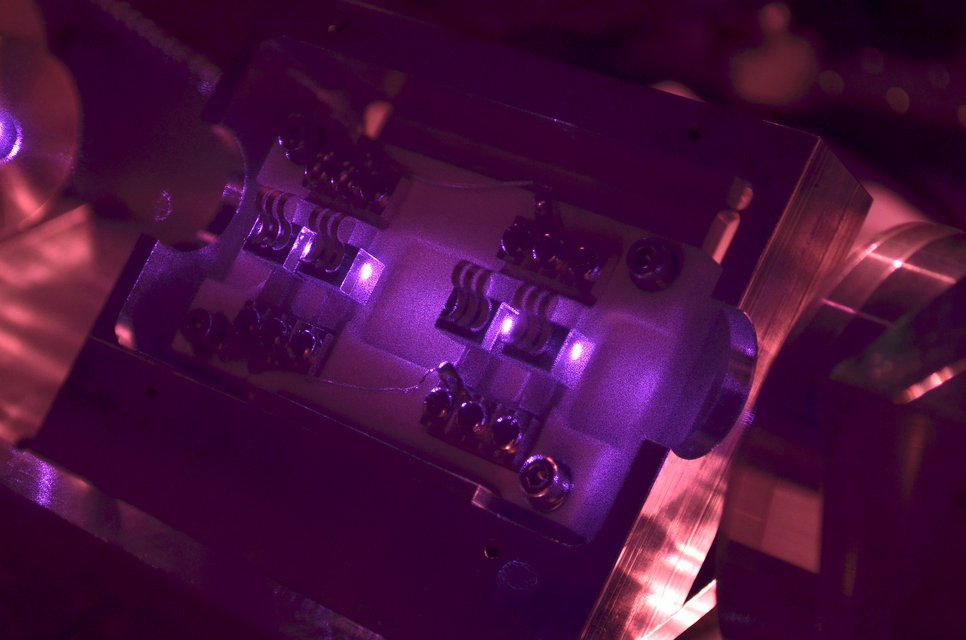
There are two major upgrades at GEO600. They are related to the laser source used to measure the distance changes, and to making and digitally storing these measurements.
The laser source at GEO600, which served as a “blueprint” for the laser systems used in gravitational-wave detectors worldwide will be upgraded. A new laser amplifier has been installed that will provide up to 70 watts of laser power to the detector and increase its measurement precision.
Additionally, the data acquisition system at GEO600 has been upgraded with new components. These take measurement data 4 million times each second to enable the observation of high-frequency gravitational waves.
Previously, GEO600 data were sampled 16 thousand times each second, far too slow for the new observations.
Will I notice any of the upgrades from the outside?
To site visitors GEO600 will look the same during and after the upgrade. All new installations are made within the current detector buildings. No new buildings or other structural changes to the site are required.
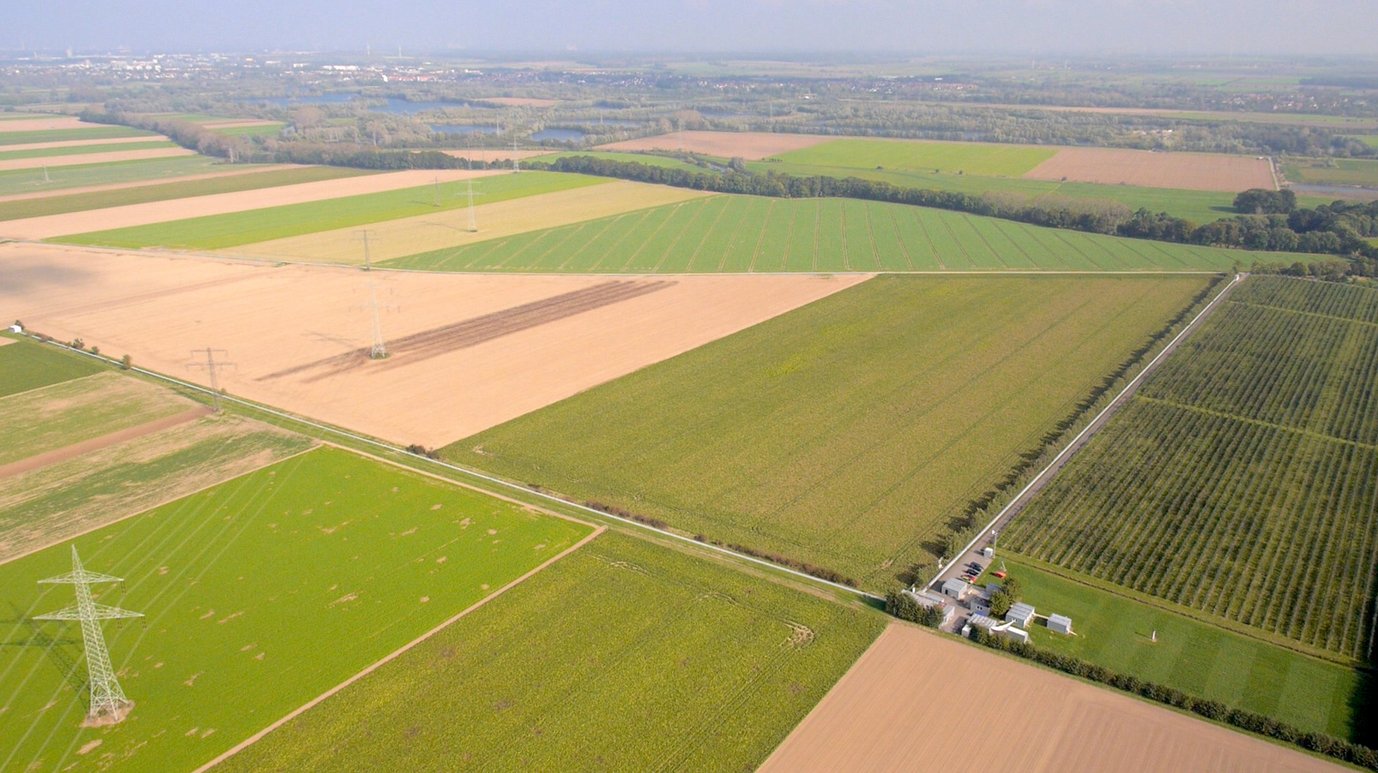
What new types of gravitational-wave sources might the upgraded GEO600 observe?
According to our current understanding, our Universe contains five times more dark matter than ordinary matter. The nature of this ubiquitous yet elusive form of matter is still unknown. One popular explanation is that it consists of an unknown elementary particle.
Certain types of the this dark matter, called “ultralight bosons“, could form clouds around black holes. Typical black holes spin rapidly with a lot of energy stored in their rotation. Ultralight bosons particles in these clouds can tap into this energy reservoir and convert it into high-frequency gravitational waves through a process known as “black hole superradiance”.
The gravitational waves generated by boson clouds around spinning black holes would be sent into space for very long times. Their frequency depends on the mass of the (unknown) ultra-light bosons and on the properties of the black hole they orbit. The search for high-frequency gravitational waves with GEO600 will target such clouds in which the bosons have masses in a previously unexplored range.
Other possible sources of high-frequency gravitational waves are
- Mergers of very light black holes formed in the early Universe, called primordial black holes,
- Mergers of exotic compact objects, which resemble neutron stars and black holes, but which are composed of yet unknown elementary particles,
- Various processes in the early Universe.
Tuning the detector
Gravitational waves change the brightness of the laser beam leaving the interferometer that is at the heart of the detectors. Sending these brightness changes back into the interferometer with a carefully placed partially reflective mirror can increase the overall gravitational-wave sensitivity of the detector.
This method known as “signal recycling” can also be used to “detune” the detector, making it much more sensitive to a specific, rather narrow band of frequencies – similar to tuning an FM radio to a specific station. In gravitational-wave detectors this is done by adjusting the position of the partially reflective mirror by microscopic amounts. The GEO600 team has experience with this: They operated their detector in this detuned mode before to optimize the detector's sensitivity to gravitational waves.
Tuning the detector to gravitational waves of a certain frequency is not a free lunch. This makes the instrument less sensitive to frequencies outside the target frequency band. By repeatedly changing the detuning and observing at the best sensitivity, it is possible to scan a wide range of frequencies with sensitivities that would otherwise be unattainable.
For continuous gravitational waves at very high frequencies, which GEO600 will target, this detuning plays a key role in covering the wide range of possible signal frequencies and types.
